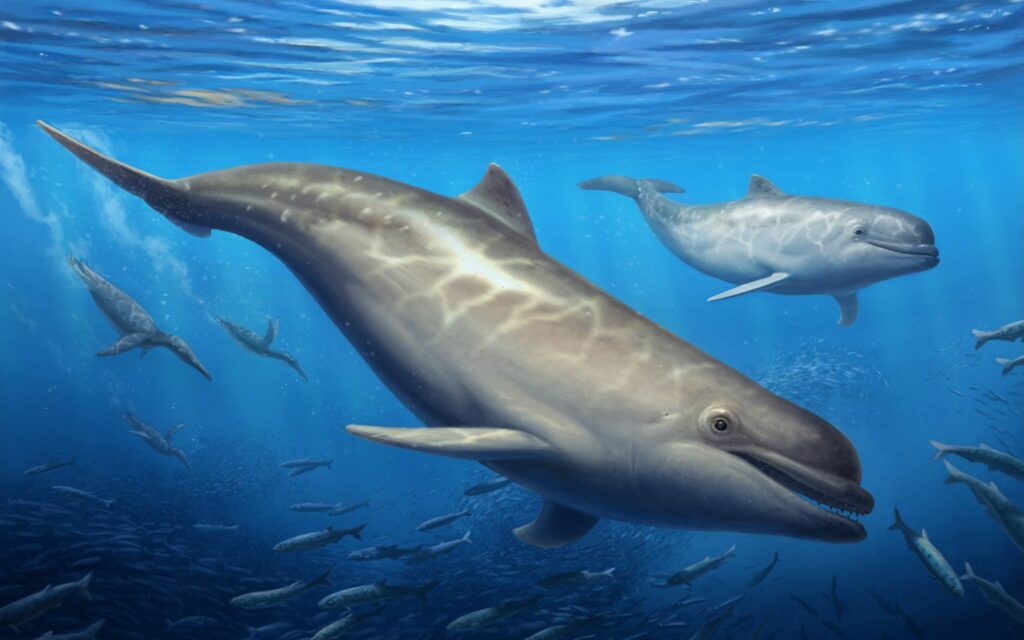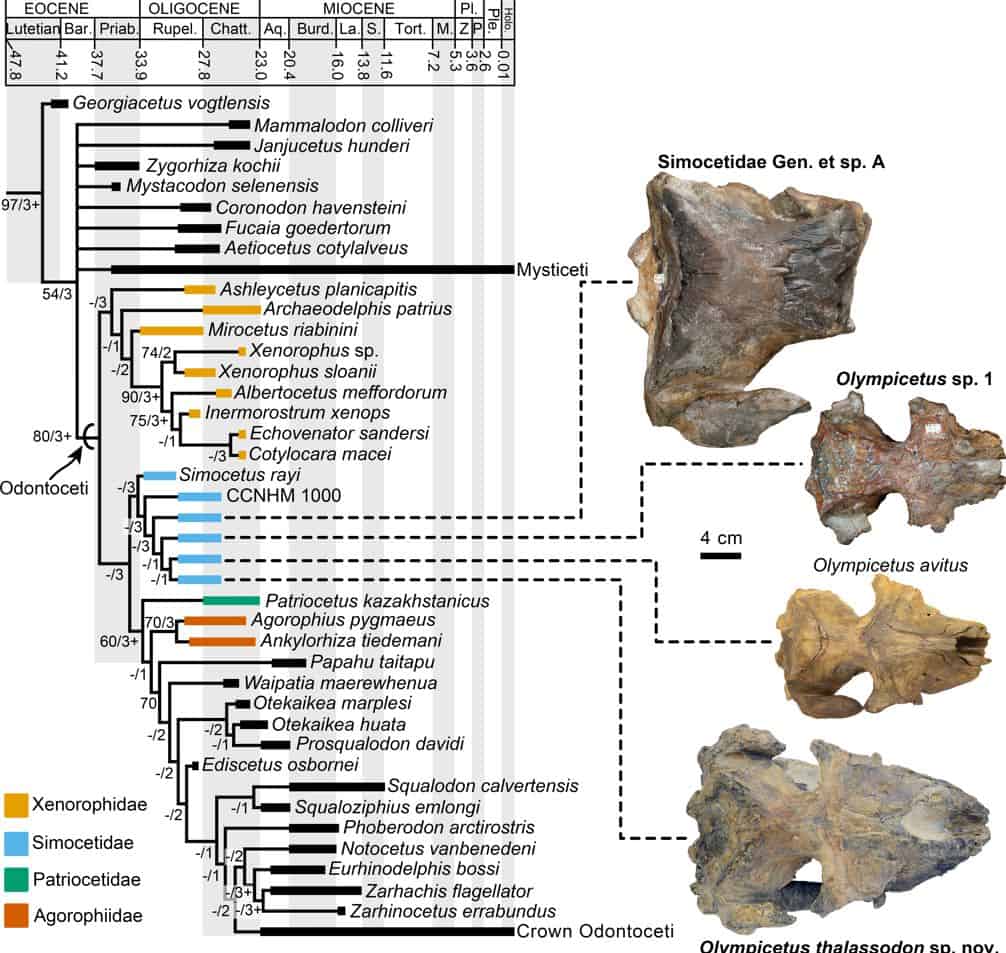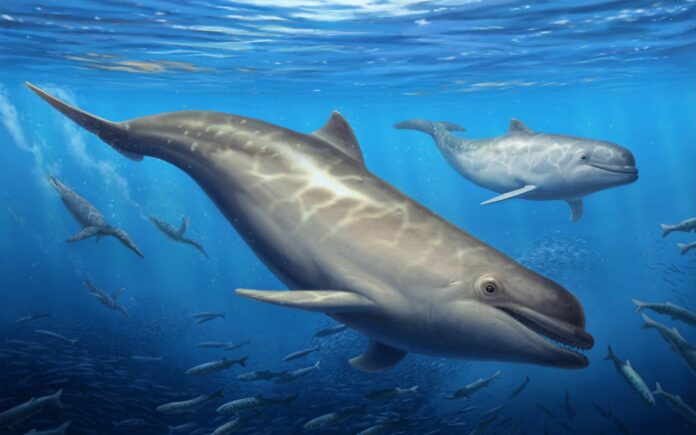A Whale of a Discovery: Journey back 28 million years to meet Olympicetus thalassodon, a newly discovered odontocete, and learn how its unique features bridge the gap between ancient whales and modern dolphins.
Curious about the ancient ancestors of modern dolphins? Behold Olympicetus thalassodon, a remarkable early odontocete that roamed the North Pacific coastline approximately 28 million years ago.
This new discovery, described in a recent study, published in the journal PeerJ Life and Environment, by Puerto Rican paleontologist Jorge Velez-Juarbe from the Natural History Museum of Los Angeles County, sheds light on the early evolution and diversification of dolphins, porpoises, and other toothed whales.
“Olympicetus thalassodon and its close relatives show a combination of features that truly sets them apart from any other group of toothed whales. Some of these characteristics, like the multi-cusped teeth, symmetric skulls, and forward position of the nostrils make them look more like an intermediate between archaic whales and the dolphins we are more familiar with,” explains Dr. Velez-Juarbe, Associate Curator of Marine Mammals at NHMLAC.

But Olympicetus thalassodon is not alone in this revelation. The study also reveals the presence of two closely related odontocete species discovered alongside it. These fossil remains were unearthed from the Pysht Formation, a geological unit exposed along the Olympic Peninsula coast in Washington State, dating back 26.5–30.5 million years.
Further exploration uncovers the familial affiliation of Olympicetus and its close kin within a group called Simocetidae, known solely from the North Pacific and considered one of the earliest diverging lineages of toothed whales. Simocetids contributed to an extraordinary fauna found within the Pysht Formation, which included plotopterids (extinct, flightless birds resembling penguins), enigmatic desmostylians, early relatives of seals and walruses, and toothed baleen whales.
Distinct variations in body size, teeth, and feeding-related structures suggest that simocetids employed different strategies for prey acquisition and likely had diverse dietary preferences.
“The teeth of Olympicetus are truly weird, they are what we refer to as heterodont, meaning that they show differences along the toothrow,” remarks Dr. Velez-Juarbe. “This stands out against the teeth of more advanced odontocetes whose teeth are simpler and tend to look nearly the same.”

Yet, several aspects of the early toothed whales’ biology remain to be unraveled, including their potential for echolocation, a trait seen in their present-day relatives. Certain cranial characteristics, such as the presence of echolocation-related structures like the melon, hint at the possibility.
A previous study had suggested that neonatal individuals were unable to hear ultrasonic sounds, prompting the next step of investigating the ear bones of subadult and adult individuals to ascertain if this changed as they matured.
Image Credit: Art by Cullen Townsend
